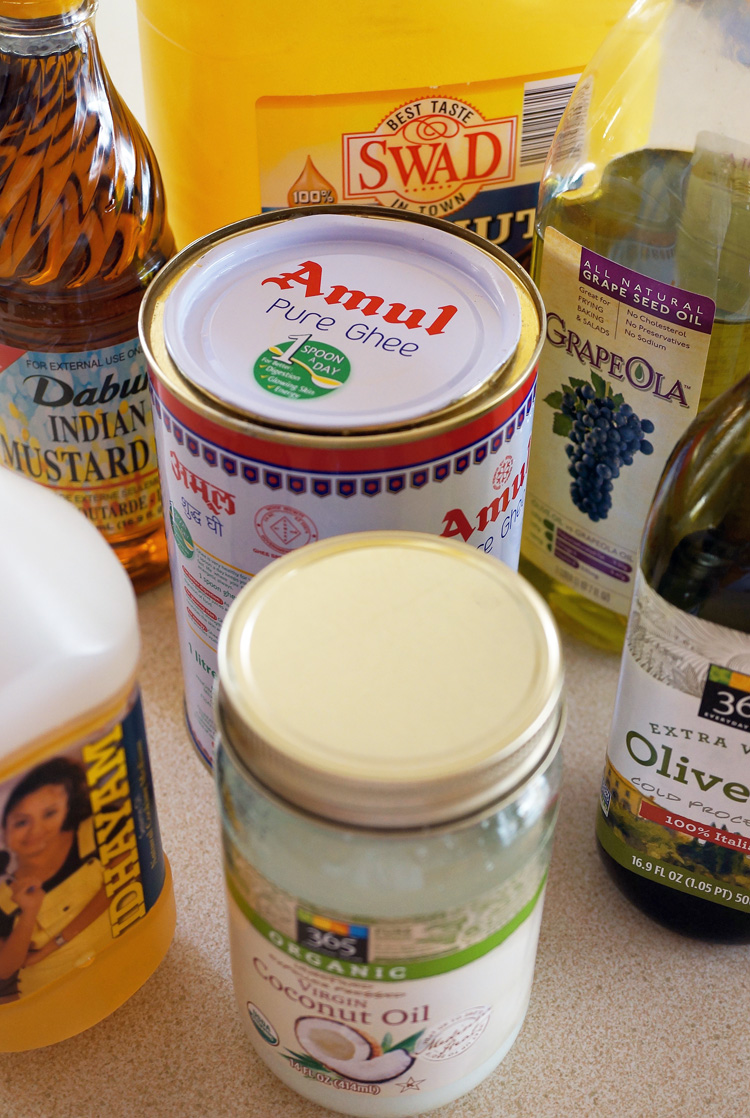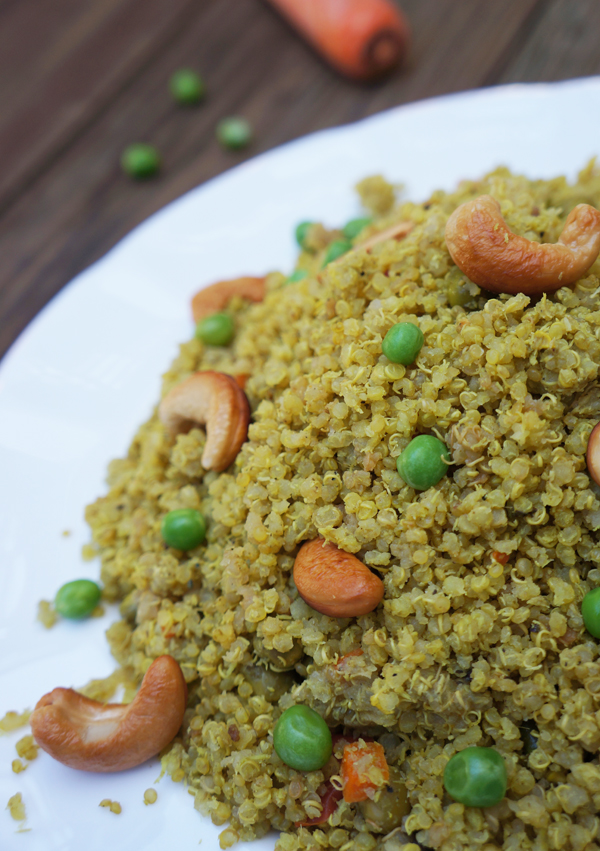
What kind of cooking oil do you use? This is a question that I’m asked all the time. Several years ago in India, the oil you used in your kitchen depended on where you came from. Coconut oil was used in Kerala and sesame oil in Andhra and Rajasthan. In the East and North mustard oil was most common and in Central India and Gujarat it was peanut oil.
Then, in the 80’s, all that changed when people became more aware of heart disease and high cholesterol. Today, the debate on the healthiest oil continues in the news and on popular shows like the Dr. Oz show. Grocery shelves are stocked with whatever the latest trends may be.
If you ask me, the right type of oil to use depends on the cooking method and the dish you’re going to prepare. I have a few different types of oils in my kitchen. When I am ready to cook, I select an oil with a low smoke point or high smoke point. I also take into consideration who I am cooking for and whether they have any food allergies.
What does low smoke point and high smoke point mean? Every oil or fat has its own smoke point – the temperature at which it starts to burn and produce potentially harmful chemicals. When oil or fat is heated it changes texture, color, taste as well as it’s nutritional properties. When it reaches its smoking point a lot of the nutrients are destroyed and it can sometimes form harmful compounds. So, matching the right type of oil to your cooking method is key.
I use cooking oil with a high smoke point to deep fry, stir fry, temper (season), and grill. Some of the oils I use for this purpose are peanut oil, sesame oil, and ghee. For my everyday cooking I use grapeseed oil (my new favorite), coconut oil, refined canola oil, and ghee. I use extra virgin olive oil for dips, dressings and marinades. I use butter, coconut oil, and canola oil for baking. I don’t keep all these oils on my kitchen shelves all the time because oils can get rancid. But I like to rotate having four or five of them in my kitchen. It’s nice to be able to use different oils in my cooking. For example, olive oil for my breakfasts, pastas and salads, peanut oil for deep frying, sesame oil for Asian food, and grapeseed oil for Indian food. If you are uncertain of an oil’s smoke point, look at the label on the bottle. Most bottles will give you the correct temperature.
A note on reusing oil: When oil is overheated repeatedly it can break down and become carcinogenic. So, using the same oil that you’ve used for deep frying over and over again can be dangerous.
Don’t go out there and buy cooking oil just because you heard that a certain oil is the best. Remember it all comes down to heat. Choose the right type of oil for the method you use to cook your every day dishes. You may use this Wikipedia guide that lists the various oil types and their smoke points.

